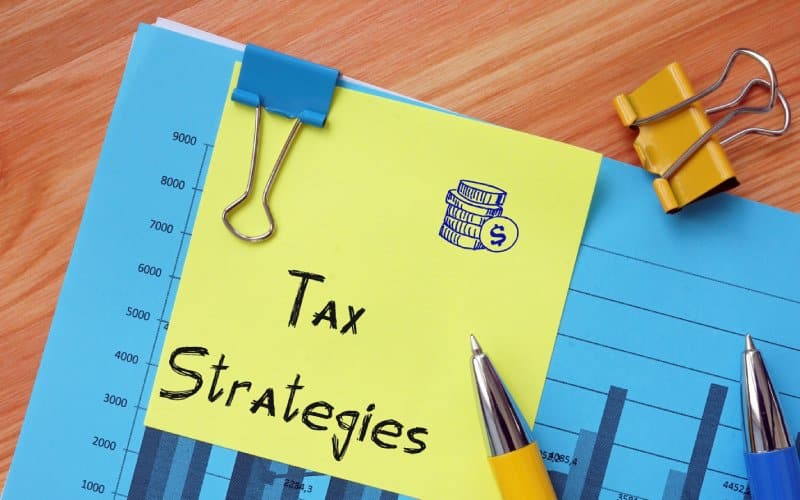Year-end is a great time to stop and rethink your financial goals for the upcoming year. While nearly everyone thinks about trying to save more, not many consider ways to save on taxes so they don’t have to scrimp.
Even though time is running out for this year’s tax strategies, there are still opportunities to benefit. Now is an ideal time to create a checklist for the year ahead, to ensure you don’t miss out on potential tax-saving opportunities. Starting early allows you to make the most of these opportunities.
Checklist for Planning
1. Changes to Alternative Minimum Tax (AMT)
A big change for the coming year are proposed changes to the alternative minimum tax (AMT) rules, starting January 1, 2024. The AMT sets a minimum level tax for taxpayers claiming various deductions, exemptions, and credits. The proposed changes include raising the AMT rate from 15% to 20%, increasing exemptions, and limiting various deductions and credits, affecting items such as capital gains and employee stock options.
Under the new rules, capital gains, employee stock option dividends, and carried-forward losses for AMT purposes will be fully taxable at 100%, compared to the ordinary tax system. Non-refundable credits, like the donation tax credit, will only be allowed at 50%.
Additionally, high-income earners making substantial charitable donations, especially with appreciated securities, may face challenges, as only 50% of the donation credit will be allowable, and there will be a 30% inclusion rate for capital gains on donated appreciated securities for AMT purposes.
People may want to consider taking certain affected actions quickly in 2023 to avoid the impact of these changes.

2. Stock Option Changes
You should be aware that, with the new AMT proposed changes, 100% of the benefits associated with employee stock options would be included in the AMT base.
3. Registered Education Savings Plan (RESP)
Use Registered Education Savings Plans (RESP) to tax-shelter savings for your child’s post-secondary education. Make contributions by December 31st to qualify for the government grant, which matches 20% of your contribution, up to a maximum $500 grant. Contribution room carries forward, allowing you to catch up by contributing up to $5,000, receiving a $1,000 government grant.
4. Registered Disability Savings Plan (RDSP)
The Registered Disability Savings Plan (RDSP) assists families in saving for the long-term financial security of individuals with disabilities. Like an RESP, you contribute, receive government grants, and watch the funds grow tax-sheltered. The government grant matches 100% of your contribution, with the limit varying based on your family income.
5. TFSA Contributions and Withdrawals
A Tax-Free Savings Account (TFSA) allows tax-free growth of your investments, and when you withdraw, no taxes are owed. The 2023 contribution limit has risen to $6,500. If you haven’t contributed before, you can catch up for previous years up to a limit of $88,000. For instance, if you withdrew $10,000 in 2022, your 2023 contribution limit increases by this amount, plus the usual $6,500.
6. RRSP Contributions
Offset taxes by making an RRSP contribution within 60 days after the year ends. These contributions lower your taxable income, reducing your current-year tax payment, all while contributing to your retirement savings. At 71, you have to convert your RRSP to an RRIF. You can minimize taxes owed at this stage by planning ahead for gradual withdrawals.
7. Charitable Donations

Both the federal and provincial governments offer donation tax credits. In Ontario in 2023, the donation tax credit rate for donations up to $200 is 5.05%. Over that amount, the tax credit rate increases to 11.16%
Changes to alternative minimum tax (AMT) rules could impact high-income taxpayers donating cash or securities. Under the proposed rules effective January 1, 2024, only 50% of donation tax credits can offset AMT, and 30% of donated shares’ gains are counted as income. This includes reducing non-refundable tax credits. You may want to make any planned donations before December 31, 2023.
8. Tax Installments
Avoid cash flow issues by planning and saving for your tax payments when they become due. If you pay installments, adjust them to match your current income, not the CRA’s schedule based on last year’s income, to prevent overpayments and keep your money accessible for longer. This way, you can invest or use the funds before settling taxes at year-end, avoiding what is essentially an interest-free loan to the CRA.
9. Training Costs
The Canada Training Credit (CTC) is a refundable tax credit designed to assist Canadians in covering eligible training fees. It allows you to claim credits for tuition and fees paid for courses taken.
10. Moving Expenses
You can write off your moving expenses if you moved at least 40 kms away for work, to run a business, or to be a full-time student and were not reimbursed.
Eligible moving expenses include (but not limited to) packing and hauling, movers, in-transit storage, and travel expenses such as vehicle, meals, overnight accommodation for up to 15 days, and other costs such as cost to update your drivers license, legal documents, cost to cancel your old lease, utility hook-ups, and more.
11. Medical Expenses
Even if you have a group benefit plan, you may pay out of pocket for medical expenses due to limitations of benefit plans. For medical expenses paid for personally, a federal tax credit can be claimed when total medical expenses exceed the lower of 3% of your net income or $2,635 for 2023. You can claim any eligible medical expenses if they occurred in a 12-month period that ends in the current tax year.
Include any non-reimbursed group benefit premiums and keep necessary documentation and receipts.

12. Opportunities for New Home Buyers
First-time homebuyers can benefit from several tax credits and incentives, including the 5% to 10% incentive from the First-Time Home Buyers’ Tax Credit. First-time buyers in Ontario, British Columbia, and PEI may also qualify for a land transfer tax rebate. If purchasing a new build or renovating substantially, you may be eligible for a GST/HST rebate if the purchase price is under $450,000. Under a new program that started in April 2023, the First Home Savings Account (FHSA) allows tax-free savings for your first home, within certain limits.
13. Expenses That Reduce Your Tax Bill
Pay various deductible expenses like interest, investment counsel fees, child care, safety deposit box fees, accounting fees, and professional dues, plus tax credit eligible expenses like charitable donations, political contributions, tuition fees, and medical expenses, before December 31st to be able to claim them.
Leverage Every Tax Opportunity
Unfortunately, many pharmacists miss out on available tax strategies, resulting in unnecessary overpayments. Unlike most accountants who simply file your taxes accurately based on the information and documentation you provide, PharmaTax specializes in proactive tax planning and corporate tax preparation, leveraging industry-specific expertise to create custom plans to reduce your tax burden.
- With The New Capital Gains Tax Changes for 2024, What are the Best Places to Tax Shelter My Money? - November 1, 2024
- Business Overhead Insurance: What it is & Why You Need It - October 18, 2024
- How Long Do I Need to Keep Receipts? - October 5, 2024


